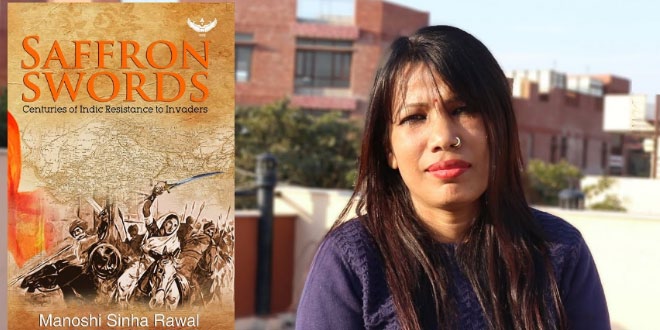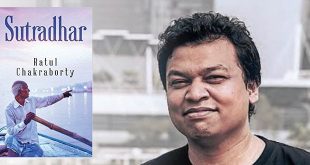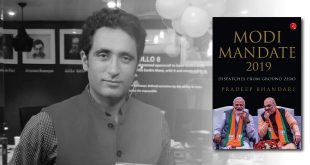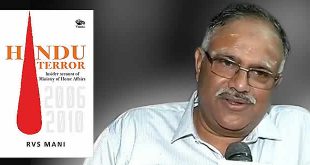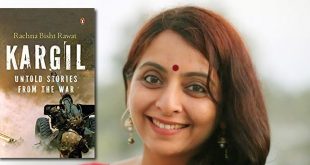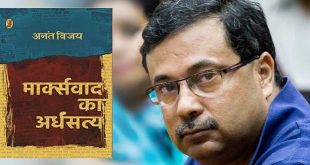| Book Name: | Saffron Swords: Centuries of Indic Resistance to Invaders |
| Author: | Manoshi Rawal, Yogaditya Sinha Rawal |
| Publisher: | Garuda Prakashan Buy Online! |
| Pages: | 250 pages |
| Price: | Rs. 449 |
Attempt to bring to light the brave saga of resistance by Indic warriors to foreign invasions
I knew the author Manoshi briefly, in a professional capacity, many years ago. I remembered her as she was my kind of feminist: author (many times over) at a young age, adventurous and intrepid female biker who traversed the length and breadth of the country ‘alone’ and yet so soft-spoken and pleasant. So when Saffron Swords came out, I was intrigued and got myself a copy immediately.
The book is an attempt to bring to light the brave saga of resistance put forward by Indic warriors to foreign invasions. While hundreds of thousands of people have given their lives fighting against the barbarism that was inflicted upon this land—young men and women, the not so young as well as the aged and even the children, this book recount the tales of valour of fifty brave men and women. To my surprise, I had earlier read the exploits of only five of these warriors: Rani Lakshmi Bai, Veer Savarkar, Rana Sanga, Bhagat Singh and Chandrashekhar Azad. The fact that all the other names were alien to my friends and me, is a telling indictment of the way we have been taught history. One cannot help but suspect if there was a larger deep-rooted conspiracy at play that we were taught about only our oppressors and colonizers. We were denied the complete truth and with it, we were denied our history.
As one reads chapter after chapter it becomes evident, that the inhabitants of this land knew and recognised the enemy, they weren’t taken by surprise and that they fought. From the beginning till the end.
Have you heard of a fiery 17-year-old young girl called Kanaklata Barua? She was shot dead by the British, though she was unarmed, simply for hoisting the Indian national flag. Before dying, she told the Brits you can only kill our body, not our spirit. How many of us have heard of Bajiprabhu Deshpande who led an army of 300 against 12,000 of Adilshah’s men? All 300 attained veergati, but the small yet ferocious army managed to hold off Adilshah’s 12,000 men for fifteen straight hours! This gave Shivaji Maharaj enough time to pass and recapture the fort. Baji Prabhu had fought gallantly till the end, with a sword in each hand, even though he was injured.
The hostile circumstances of those times forced even the peaceful agrarian folk into combat. Farmer turned warrior, Rampyari Gurjar led an army of 40,000 women. She joined hands with the Mahapanchayat army when they learnt of the infamous Taimur’s impending attack. The Mahapanchayat would fight Taimur at day and Rampyari’s army would take over at night. It was absolute hell for Taimur, who was severely injured and retreated. He had come to India with a lakh and a half strong army. He was eventually left with only a few thousand and died a few years later. Was anyone from our Indic lands capable of facing up to the barbaric Mohammad Ghori? Yes, it was brave Rani Naiki Devi. She fought Ghori with her young son tied to her back. And yes, she won. Why don’t we know any of this or any of the other goosebump-inducing, epic tales of bravery of any of our ancestors?
Looking at the many countries around, it is impossible to not observe how so many of them are defeated cultures. The fact that India is not one of them is undoubtedly due to the sacrifices made by the selfless, brave, Indic warriors. While the book left me feeling exceptionally proud, it also left me heartbroken and forced to introspect. It is well nigh impossible to turn a page unmoved when one has just read about villages after villages being pillaged and ravaged and not a soul left to offer a chaadar or to perform antim sanskaar for the hutatmas?
Saffron Swords is a commendable effort by an individual who came across all this information painstakingly in her own travels and research. But with each chapter I found myself asking so many questions of my own. Will I learn more if I visit the village today and grill the residents? What happened to the few freedom fighters who survived the wars? Did they have someone to hold their hand in their last few days? What about their descendants?
On my visit to Punjab many years ago, a small book that I had purchased from the railway station, on Guru Gobind Singh and the Char Sahibzade, mentioned in detail even Baba Moti Ram Mehra (the brave angel who was killed for feeding the Guru’s sons milk for three nights) and had mention of his family lineage lasting for numerous generations and even naming the current one and where they live today. I longed to know a similar detailed history of all the brave warriors mentioned in this book. I needed to know that their legacy has carried on… in some way.
The numerous accounts of valour, disclosed in the book, is evidence enough that the Indic natives who faced brutality and cruelty of the worst kind known to man, were courageous people. The book definitively busts the falsehood foisted on us that we were a weakly and cowardly people, a people deserving of nothing better than oppression and foreign rule. This falsehood keeps getting propagated, to ensure that we Indians do not seek pride in our history or culture. For who would try to save a culture and history one is ashamed of?
Fortunately, Mother India has numerous sons and daughters who don’t just love her but are also wise and learned enough to sift fact from fiction and truth from propaganda and work indefatigably to restore its glory. They dig up historic details that have been meticulously concealed from us. The book Saffron Swords by Manoshi Sinha Rawal is one such example, a product born of deep love for the country. And the great news is that this book is just part one of a series in the making. We cannot wait for the next book, to know and learn more about and to celebrate the hitherto forgotten heroes of our land.
As one reads chapter after chapter it becomes evident, that the inhabitants of this land knew and recognised the enemy, they weren’t taken by surprise and that they fought. From the beginning till the end. Yes, our brave ancestors fought. Many of them faced guns and gun powder with sickles and swords; with only the unfailing blazing orange flames of desh bhakti burning in their hearts, keeping their resolves strong… and hence the name Saffron Swords.
We grew up in ignorance listening to messages like, ‘de di haemin azadi bina khadak, bina dhaal‘ if that was truly the case then why were hundreds of patriots hung, tortured, killed and maimed for fighting for their freedom, our freedom? Another rhyme then comes to mind, that rightly asks, ‘jaaney kitne jhooley phasi par, kitno ne goli khayi thi, kyu jhooth bolte ho sahib, ki charkhe se aazadi aayi thi.’
The recent developments in the country are encouraging. Abrogation of Article 370 and Article 35 A, repeal of special status to J&K and granting of Union Territory status to J&K and to Ladakh (which has been finally separated and made a Union territory) has been a more than welcome development. It gives us hope that with a powerful and dedicated Centre, there is scope for a nation to undo and correct its historic blunders.
It gives us hope that our glorious suppressed history will, in due course, be officially made known to all—for us to read, know, disseminate and seek inspiration from.
 Kids Portal For Parents India Kids Network
Kids Portal For Parents India Kids Network
